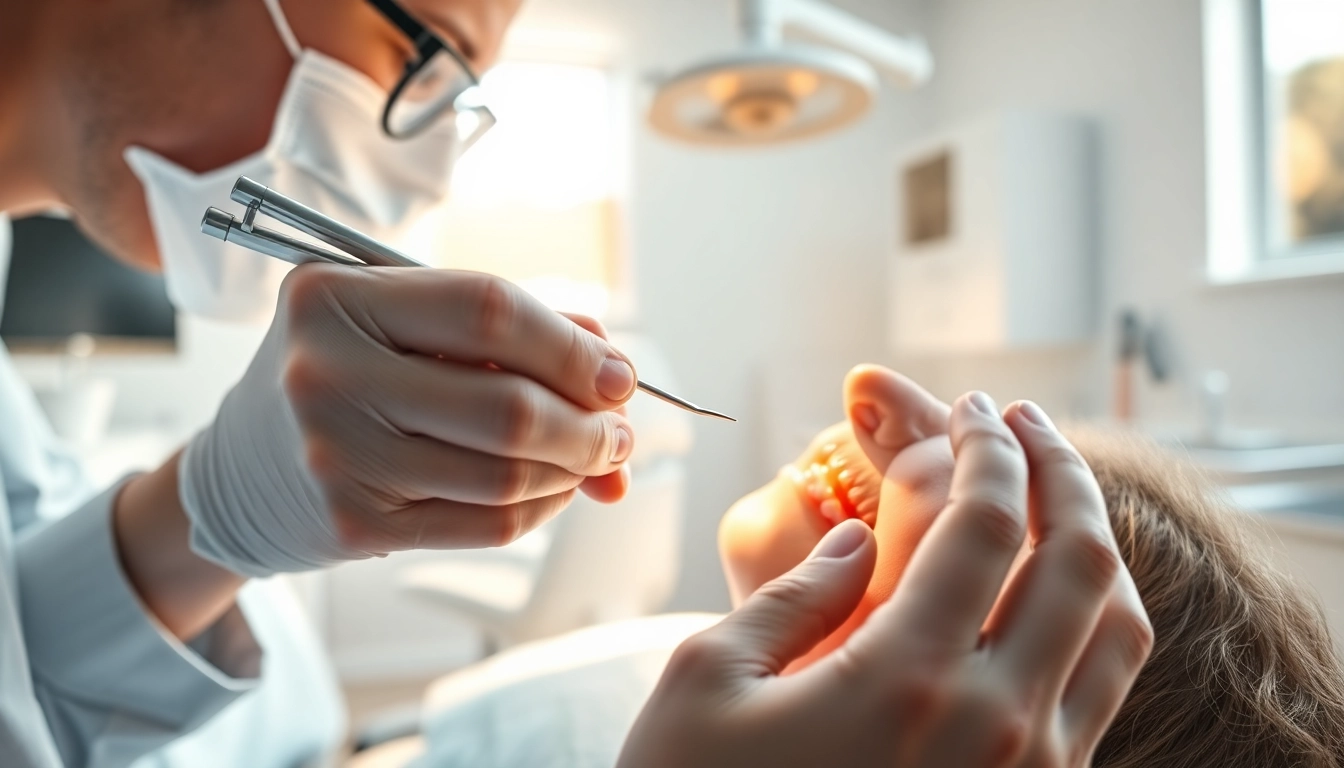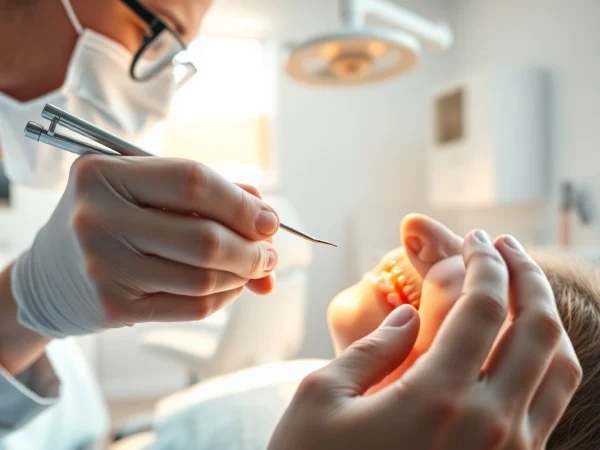The Comprehensive Guide to Dental Crowns: Types, Benefits, and Care
Understanding Dental Crowns
What are Dental Crowns?
Dental crowns are tooth-shaped caps that are placed over damaged, decayed, or weakened teeth. Designed to restore a tooth’s size, shape, strength, and appearance, crowns encapsulate the existing tooth above the gum line. They play a vital role in dental restoration, helping to protect a compromised structure or to provide support for dental bridges and implants. Additionally, crowns can significantly improve the aesthetics of a smile, making them not just a functional solution but also an aesthetic one. For detailed information, you may explore our section on crowns.
Why Are Crowns Necessary?
The necessity of dental crowns arises from various dental issues that can significantly affect oral health. These include:
- Restoration of Damaged Teeth: Crowns are commonly used to restore teeth that have undergone extensive decay or trauma. A crown can strengthen a tooth that has lost a considerable amount of structure, allowing it to function effectively.
- Protection for Weak Teeth: Teeth that have large fillings, extensive wear, or cracks can benefit from crowns by providing additional strength and coverage, preventing further damage.
- Support for Dental Implants: Crowns serve as the final component of a dental implant system, providing the visible part of the replacement tooth.
- Enhancing Appearance: Crowns can also be used for cosmetic purposes to cover discolored or misshaped teeth, contributing to an aesthetically pleasing smile.
Common Myths About Crowns
Despite their widespread use, there are several myths about dental crowns that can lead to misunderstandings. Here are a few common ones:
- Myth 1: Crowns are only for people with poor dental hygiene.
Fact: Dental crowns are needed for various reasons, including trauma or congenital conditions, not just poor oral hygiene. - Myth 2: Getting a crown is a painful procedure.
Fact: The crown placement procedure is typically performed under local anesthesia, making it relatively painless for most patients. - Myth 3: Crowns require significant alterations to the tooth.
Fact: While some tooth preparation is necessary, advancements in dental techniques allow for minimal alteration of the natural tooth structure.
Types of Dental Crowns
Porcelain and Ceramic Crowns
Porcelain and ceramic crowns are popular choices for their natural appearance and aesthetic qualities. They blend seamlessly with the surrounding teeth, making them ideal for visible areas like the front teeth. These crowns offer a high level of customization in shade and translucency, closely mimicking the look of natural dental enamel. Although they are less durable than their metal counterparts, advancements in materials have significantly improved their strength and longevity.
Metal and Porcelain-Fused-to-Metal Crowns
Metal crowns, composed of various metallic alloys, are well-known for their strength and durability. They are particularly suited for back teeth, where the forces of chewing are greatest. However, their metallic appearance can be a concern for some patients. Porcelain-fused-to-metal crowns offer a hybrid solution, combining the strength of metal with the aesthetic appeal of porcelain. They provide a more natural appearance while still retaining considerable durability.
Traditional vs. Temporary Crowns
Crowns can be categorized as traditional or temporary. Traditional crowns are designed for permanent placement, crafted from durable materials like porcelain, metal, or a combination of both. In contrast, temporary crowns are typically made from acrylic or composite materials and are used as a short-term solution while the permanent crown is being fabricated. Temporary crowns are essential for protecting the underlying tooth and maintaining aesthetics until the final crown is ready to be placed.
The Dental Crown Procedure
Initial Consultation and Examination
The journey to obtaining a dental crown begins with an initial consultation where the dentist assesses the condition of the tooth requiring treatment. Essential diagnostic tools such as X-rays may be utilized to evaluate the tooth’s health beneath the surface. Based on the findings, the dentist will determine the most appropriate type of crown and discuss the patient’s options, expectations, and any potential risks associated with the procedure.
The Crown Placement Process
Once the treatment plan is in place, the crown placement procedure typically unfolds in a few steps:
- Tooth Preparation: The dentist will prepare the tooth by removing any decay and reshaping it to accommodate the crown. This process may involve filing down the tooth to ensure a secure fit.
- Impression Taking: An impression of the prepared tooth is taken to create a custom crown, ensuring that it fits comfortably and aligns properly with the surrounding teeth.
- Temporary Crown Placement: A temporary crown may be affixed to protect the prepared tooth while the permanent crown is being constructed, generally taking a couple of weeks.
- Crown Placement: After the permanent crown is ready, the dentist will remove the temporary crown, clean the underlying tooth, and place the new crown, ensuring proper fit and bite before cementing it in place.
Post-Procedure Care for Crowns
After crown placement, patients may experience sensitivity or discomfort for a few days. It’s essential to follow the dentist’s post-procedure care instructions, which may include:
- Avoiding hard or sticky foods for a period to prevent dislodging the crown.
- Maintaining excellent oral hygiene practices, including brushing and flossing around the crown.
- Scheduling follow-up appointments to ensure the crown is functioning correctly and is not causing any issues.
Cost Factors and Insurance Considerations
Average Cost of Different Crown Types
The cost of dental crowns can vary significantly based on several factors, including the type of crown selected, the location of the dental practice, and specific patient needs. On average, patients can expect to pay:
- Porcelain Crowns: $800 to $3,000 per tooth.
- Porcelain-Fused-to-Metal Crowns: $500 to $1,500 per tooth.
- Metal Crowns: $600 to $2,500 per tooth.
- Temporary Crowns: Generally less expensive, ranging from $100 to $300 per tooth.
Insurance Coverage for Dental Crowns
Many dental insurance plans cover a portion of the cost of crowns, typically if they are deemed necessary for restoration and oral health. Patients should review their specific plans to understand coverage limits, co-payments, and any waiting periods that may apply to crown procedures.
Financing Options for Dental Treatment
For those without adequate insurance coverage, several financing options may be available, including payment plans offered by dental offices, third-party financing companies, or health care credit cards. Discussing these options with the dental office can help make necessary treatments more financially manageable.
Long-Term Care and Maintenance for Dental Crowns
Best Practices for Crown Durability
Ensuring the longevity of dental crowns involves maintaining good oral hygiene and regular dental visits. Here are some best practices:
- Daily Oral Care: Brush at least twice a day and floss daily to keep the area around the crown clean and free from plaque.
- Regular Dental Check-Ups: Routine visits allow dentists to monitor the condition of the crown and identify any potential issues early.
- Avoiding Bad Habits: Refrain from chewing on hard objects (like ice or pens) that could potentially damage the crown.
Signs Your Crown Needs Replacement
Over time, crowns may require replacements due to wear, damage, or decay underneath. Common signs that a crown may need to be replaced include:
- Visible cracks or chips in the crown.
- Increased sensitivity to temperature or pressure.
- Discoloration or changes in shape.
- Gums receding, exposing the base of the crown.
Regular Dental Check-Ups and Their Importance
Regular dental check-ups are crucial for maintaining the health of both natural teeth and crowns. Dentists can provide professional cleanings, conduct examinations, and monitor the integrity of crowns, identifying potential problems before they escalate into more severe issues. These proactive measures help in ensuring that dental restorations like crowns last for years.










